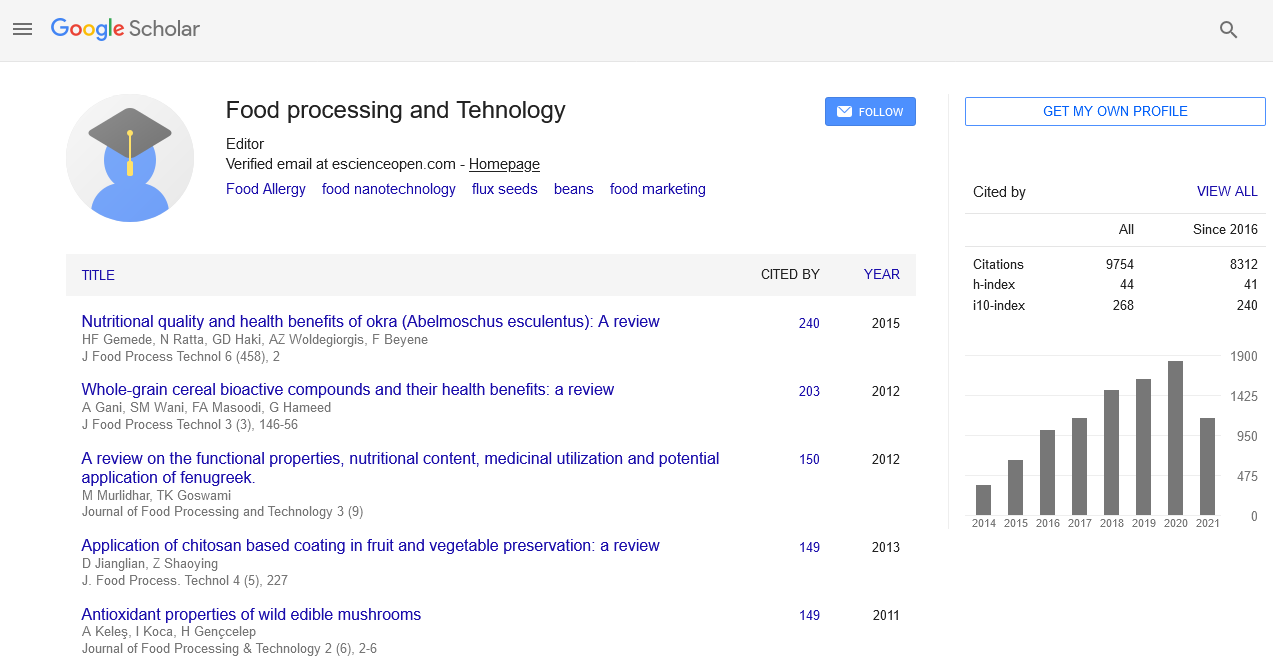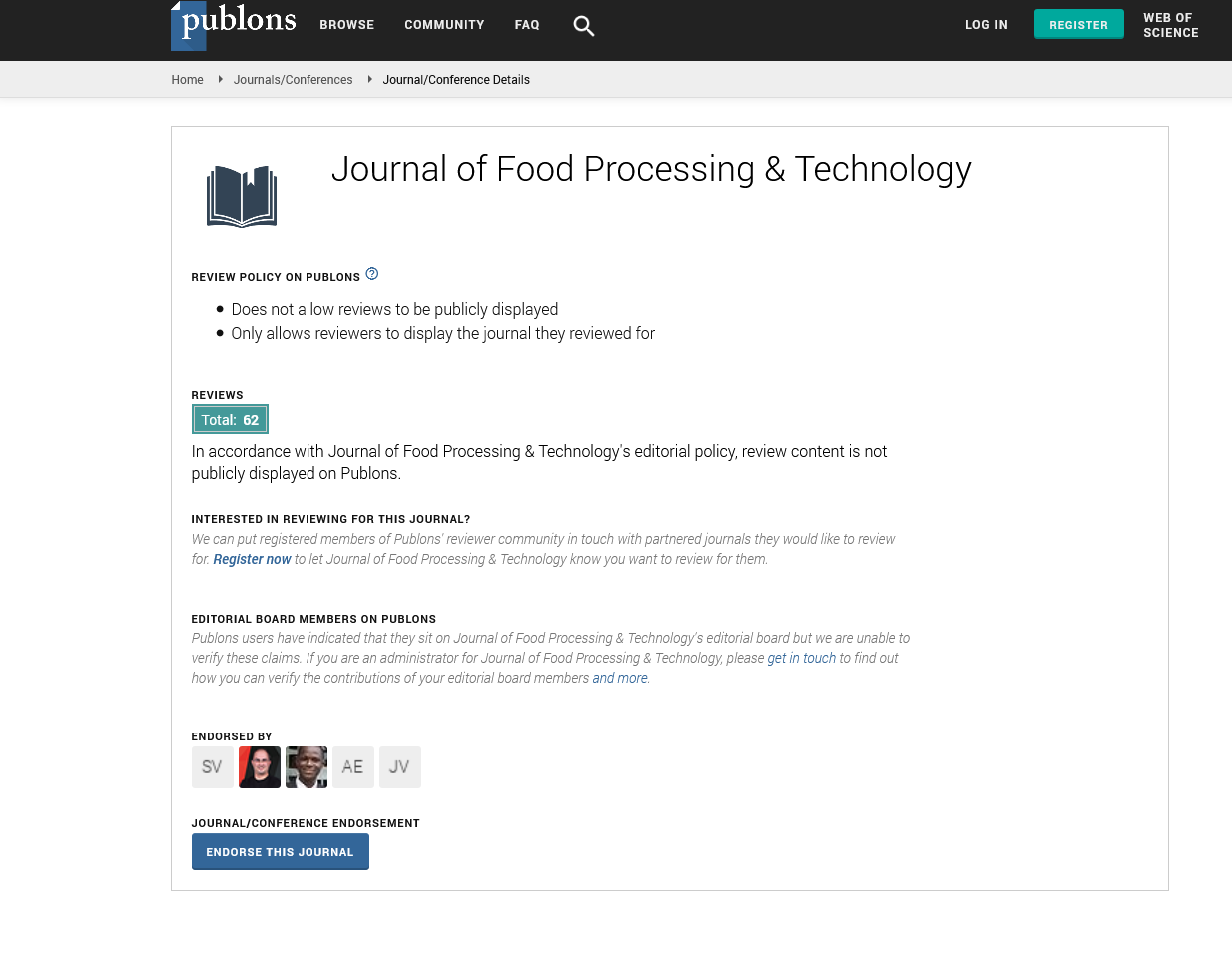Indexed In
- Genamics JournalSeek
- Academic Keys
- JournalTOCs
- China National Knowledge Infrastructure (CNKI)
- Access to Global Online Research in Agriculture (AGORA)
- Centre for Agriculture and Biosciences International (CABI)
- RefSeek
- Directory of Research Journal Indexing (DRJI)
- Hamdard University
- EBSCO A-Z
- OCLC- WorldCat
- Scholarsteer
- SWB online catalog
- Publons
- Euro Pub
- Google Scholar
Useful Links
Share This Page
Journal Flyer

Open Access Journals
- Agri and Aquaculture
- Biochemistry
- Bioinformatics & Systems Biology
- Business & Management
- Chemistry
- Clinical Sciences
- Engineering
- Food & Nutrition
- General Science
- Genetics & Molecular Biology
- Immunology & Microbiology
- Medical Sciences
- Neuroscience & Psychology
- Nursing & Health Care
- Pharmaceutical Sciences
Bioaccessibility of fish oil encapsulated
World Food Science & Technology Congress
October 15-16, 2018 Athens, Greece
Alvarez R, Encina C and Robert P
University of Chile, Chile
Posters & Accepted Abstracts: J Food Process Technol
Abstract:
Scientific evidence has showed that EPA and DHA are necessary in human nutrition. They play an important role in the prevention of some diseases. Fish oil (FO) is the natural source of long chain polyunsaturated fatty acids-omega-3 (LCPUFA-??3) that can be incorporated into the new food products. However, one of the main disadvantages of this oil is their high susceptibility to oxidation. The microencapsulation of FO has been proposed as a strategy for the elaboration of functional foods, due to the protection of FO. The objective of this research was to study the effect of microencapsulation of FO with inulin (In) and hydroxypropyl cellulose (HPC) on the bioaccessibility of EPA and DHA in a low-fat yogurt (food matrix). The methodology included the preparation of both fish oil microparticles, In and HPC and two methods of spray drying (conventional (C) and water-free (AC)). The microparticles were incorporated into a low-fat yogurt and finally the bioaccessibility of EPA and DHA was studied with and without the sample yogurt through a gastrointestinal model in vitro and analyzed by means of gas chromatograph. C-FO-HPC microparticles obtained lower encapsulation efficiency (EE) (69.3%) compared to C-FO-In and AC-FO-HPC microparticles, who are EEs, were 75.1 and 90.5% respectively. These differences could be due to the retention mechanism of the FO within the microencapsulation, which would affect its subsequent bioaccessibility. During gastric digestion (GD) and intestinal digestion (ID), the EPA and DHA content released from the microparticles showed significantly lower results (p???0.05) due to the presence of a non-fat yogurt, with the exception of AC-FO-HPC during GD (1.8 EPA and 0.9 DHA) and ID (3.7 EPA and 1.8 DHA). Finally, bioaccessibility was achieved in the C-FO-In microparticles (EPA 49.0% and DHA 36.9%). This may be due to the type of encapsulating agent used (In) and type of emulsion, which enables a greater solubility of the microparticle, and therefore, a greater release of the microencapsulated FO content.
Biography :
E-mail: rudycarolina@gmail.com


